Best indoor cycling trainers to help you ride more this year
Here are our top picks for the best indoor trainers for all budgets
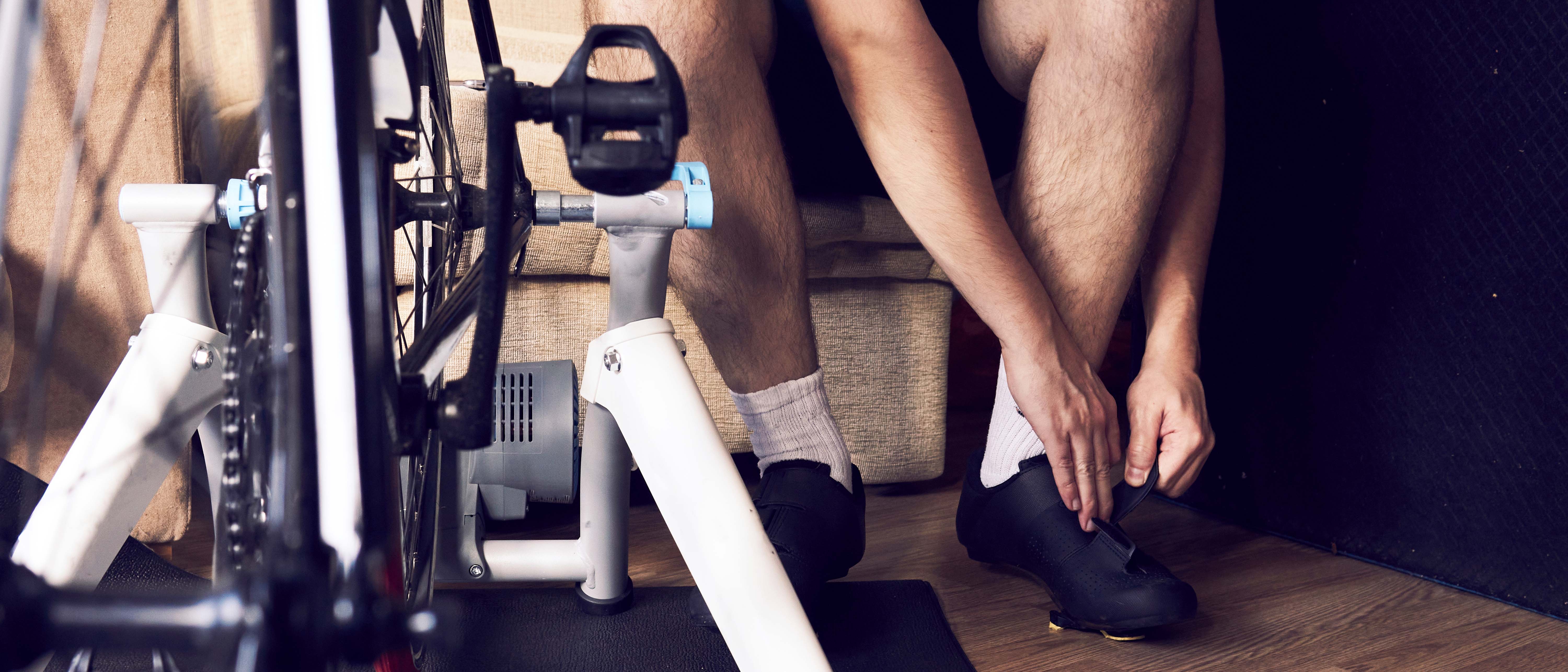
We’ve tested the best indoor cycling trainers to help you find the right setup, whether you’re building a winter training plan or want a reliable way to ride at home. Our team has spent hours riding, comparing resistance accuracy, stability, noise levels, setup experience, and value for money to recommend the strongest options.
If you want the most realistic road feel and seamless app integration, the Wahoo Kickr Move stood out for us during testing. It offers smooth, responsive resistance and an immersive ride that experienced cyclists will appreciate. Prefer something more affordable and portable? The Feedback Omnium Over-Drive Bike Trainer impressed us with its compact, travel-friendly design and stable feel for the price.
From premium direct-drive systems to simple rollers, these are the trainers that performed best in our tests, so you can choose the right one for your space, budget, and training goals.
Quick list
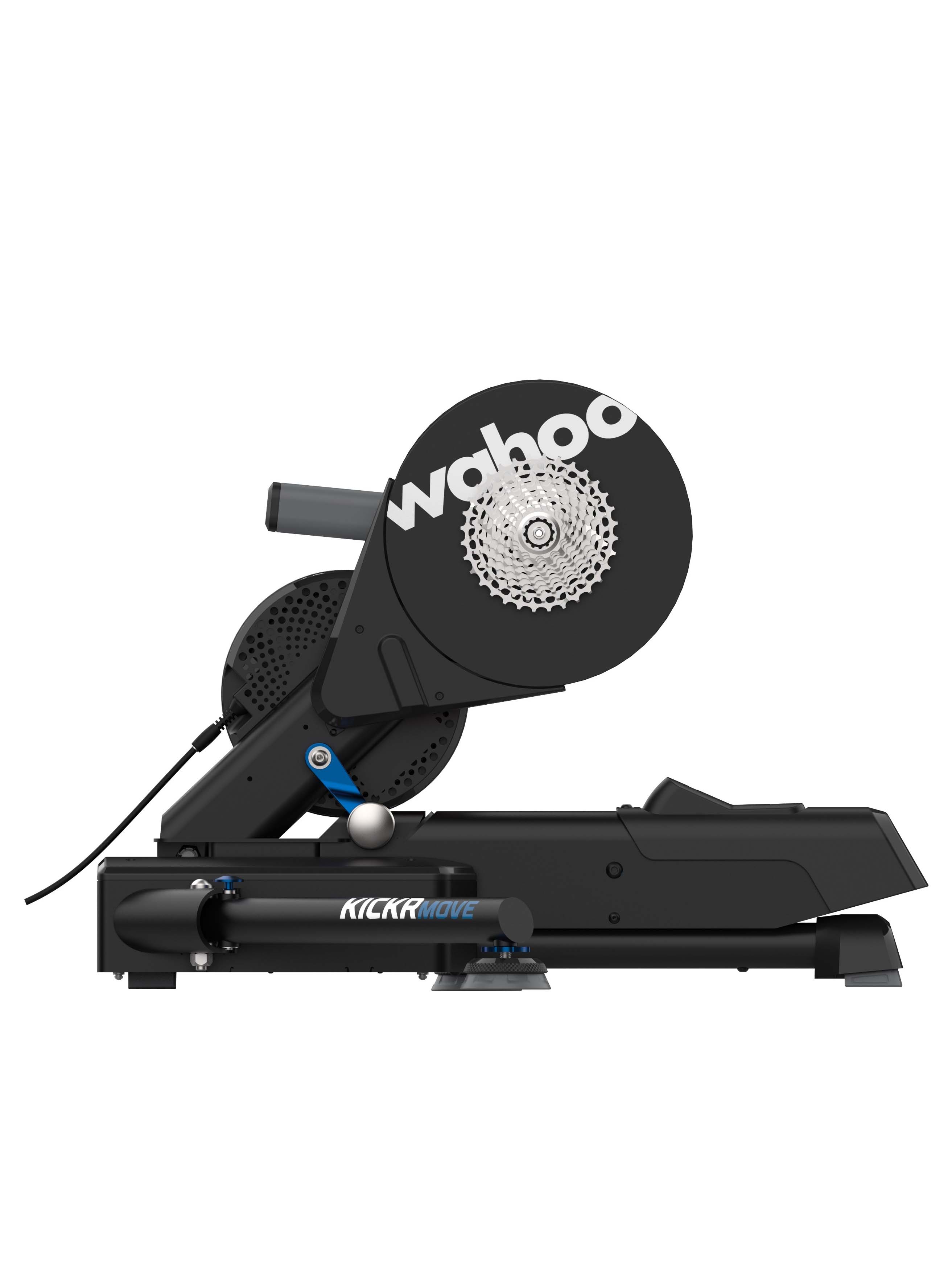
It was undeniable that the Kickr Move was the best of the bunch for simulating outdoor rides. If you don’t like the fore-aft movement, the Kickr Move also includes a lockout feature.
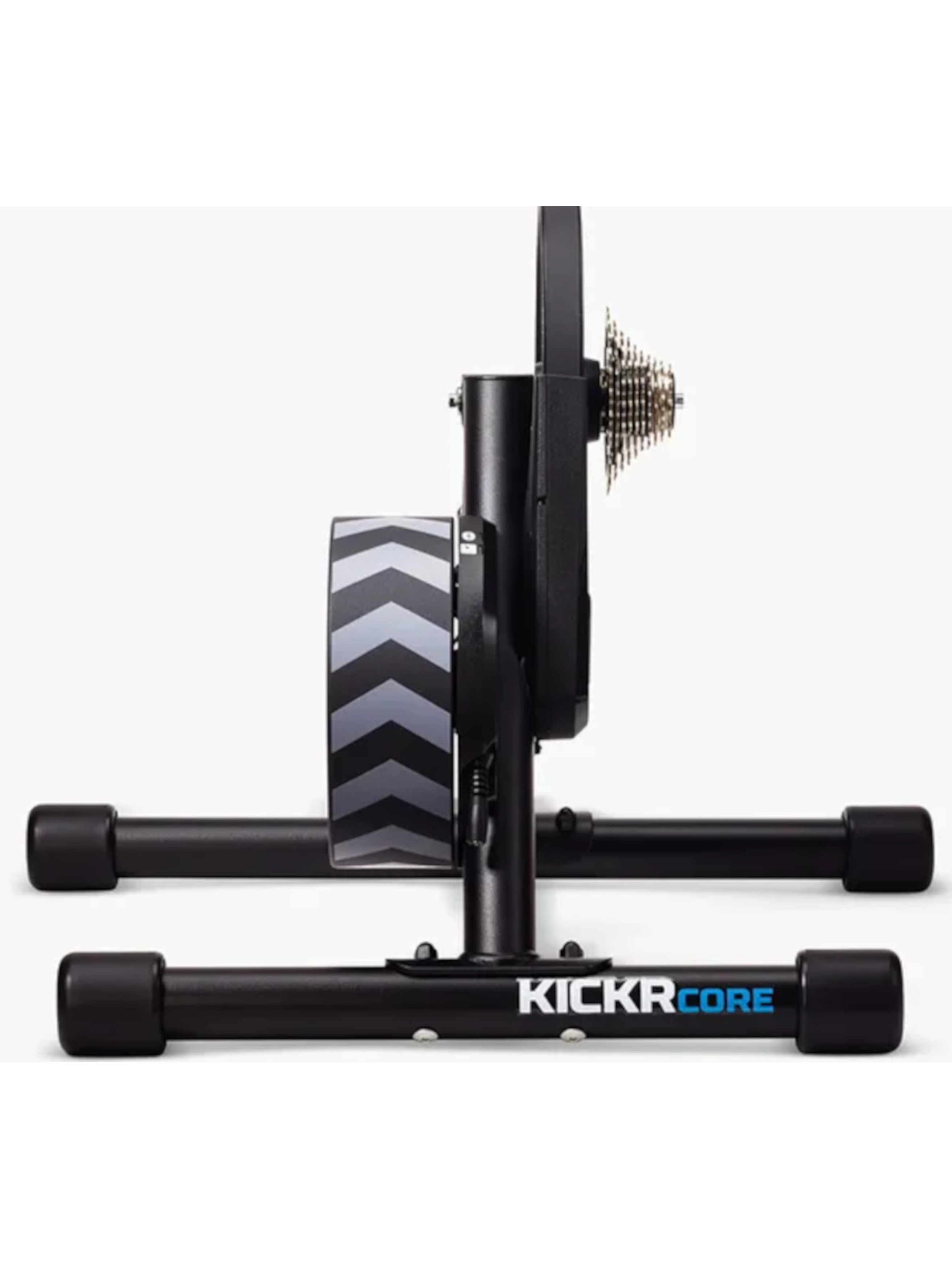
While the Kickr Core Zwift One takes more assembly and doesn’t fold up, that’s where its shortcomings end. The Zwift is the best trainer for the money and out top-pick for most riders.
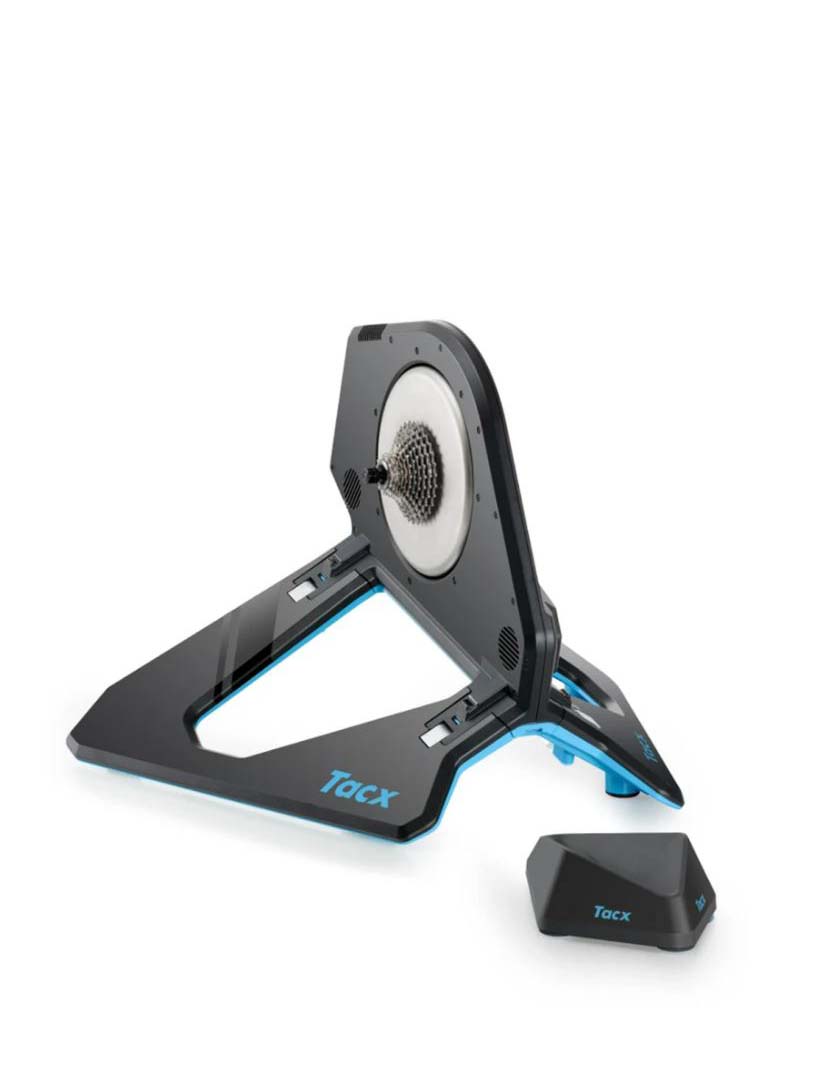
Despite its wide stance when set up for use, the Neo 2T folds up flat for easy storage. Its folded stature makes it easy to stow this in a closet or behind a couch.
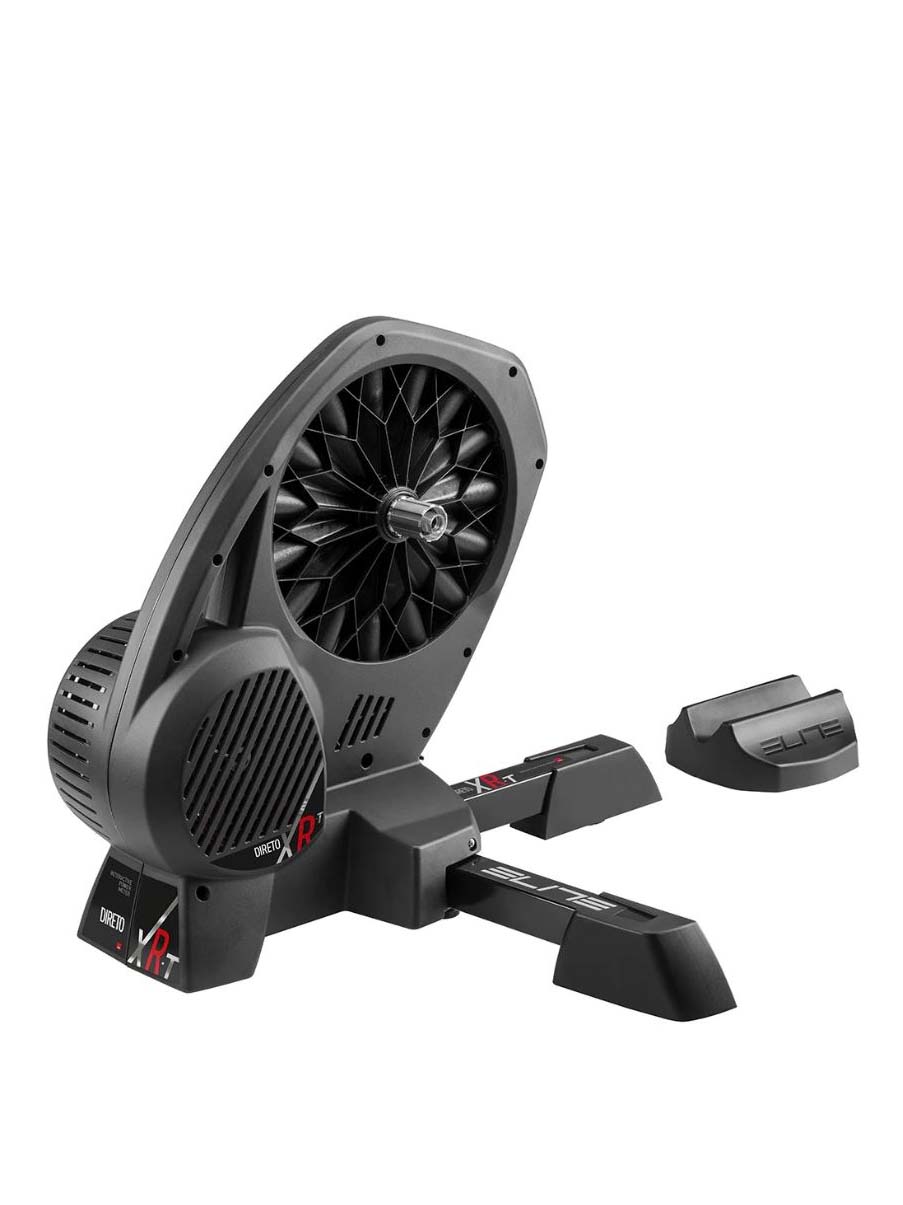
When set up for use, it’s super stable, and there’s almost no lateral movement. This is great if you’re after a stable pedaling platform, but it won’t give you that real-ride-feel.
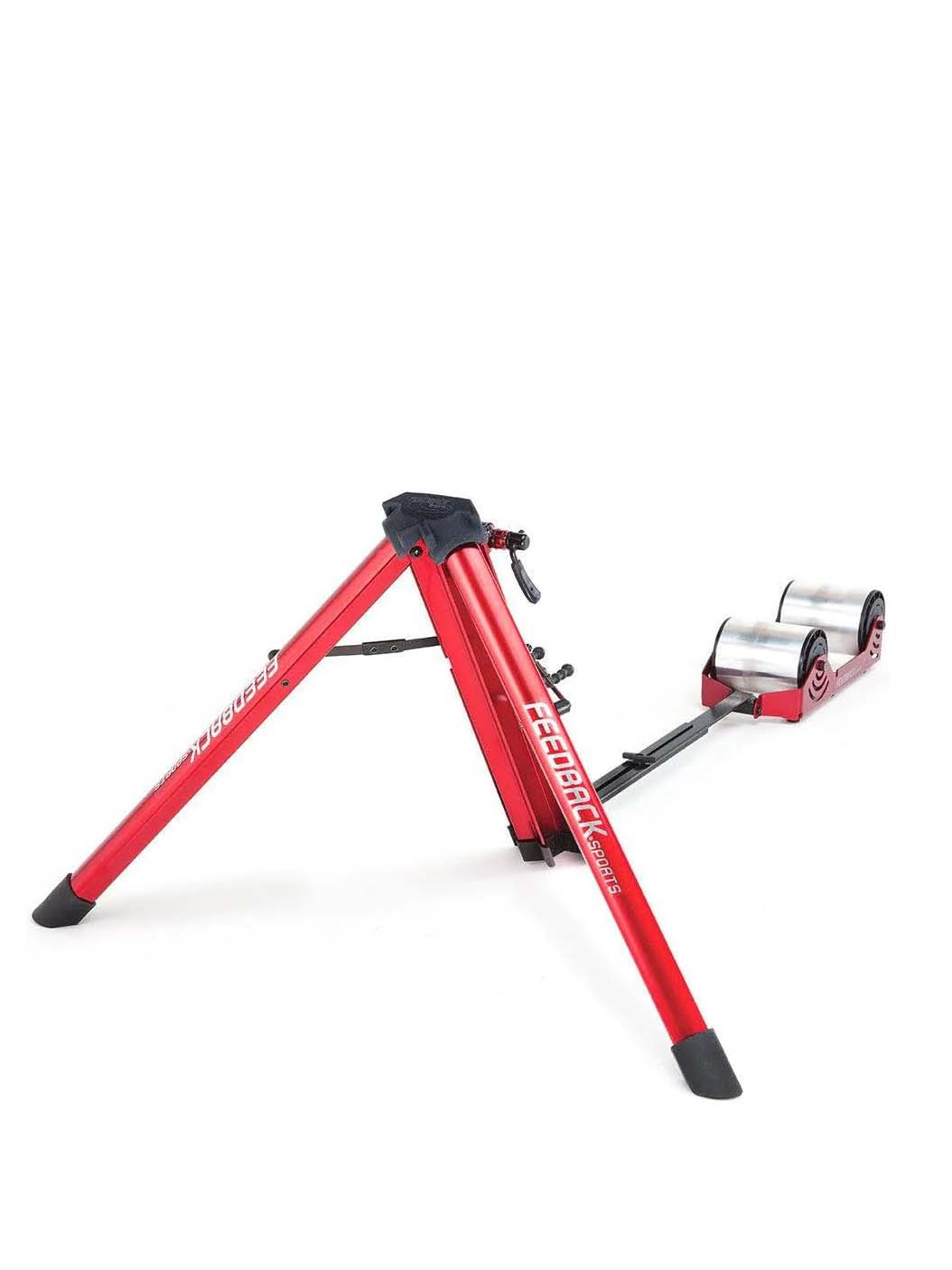
The Omnium isn’t a smart trainer, yet it is surprisingly smart. By using an ANT+ or Bluetooth rear wheel speed sensor, you can connect to Zwift to ride in a virtual environment.
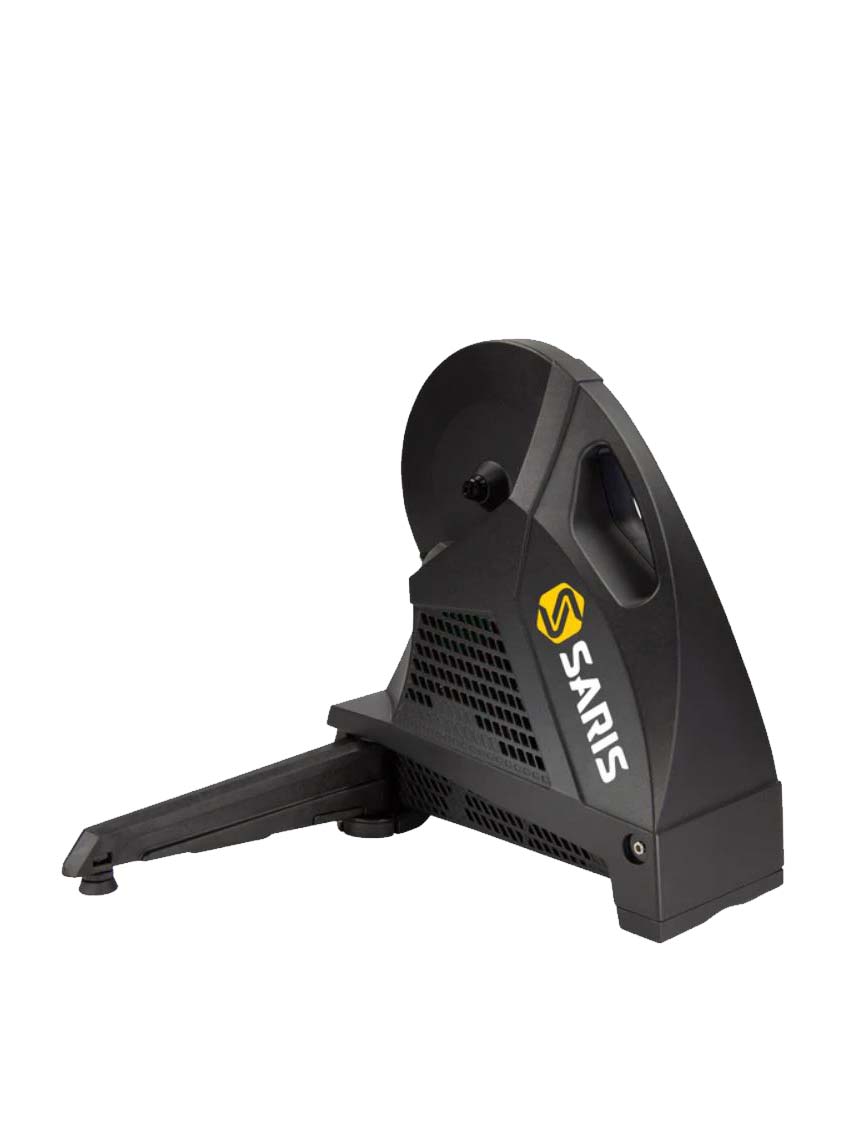
Our testers found that the Saris H3 Plus offered some of the smoothest and most natural resistance ramp-ups of any trainer in our test. It felt reactive and accurate.
Best cycling indoor trainer for real ride feel
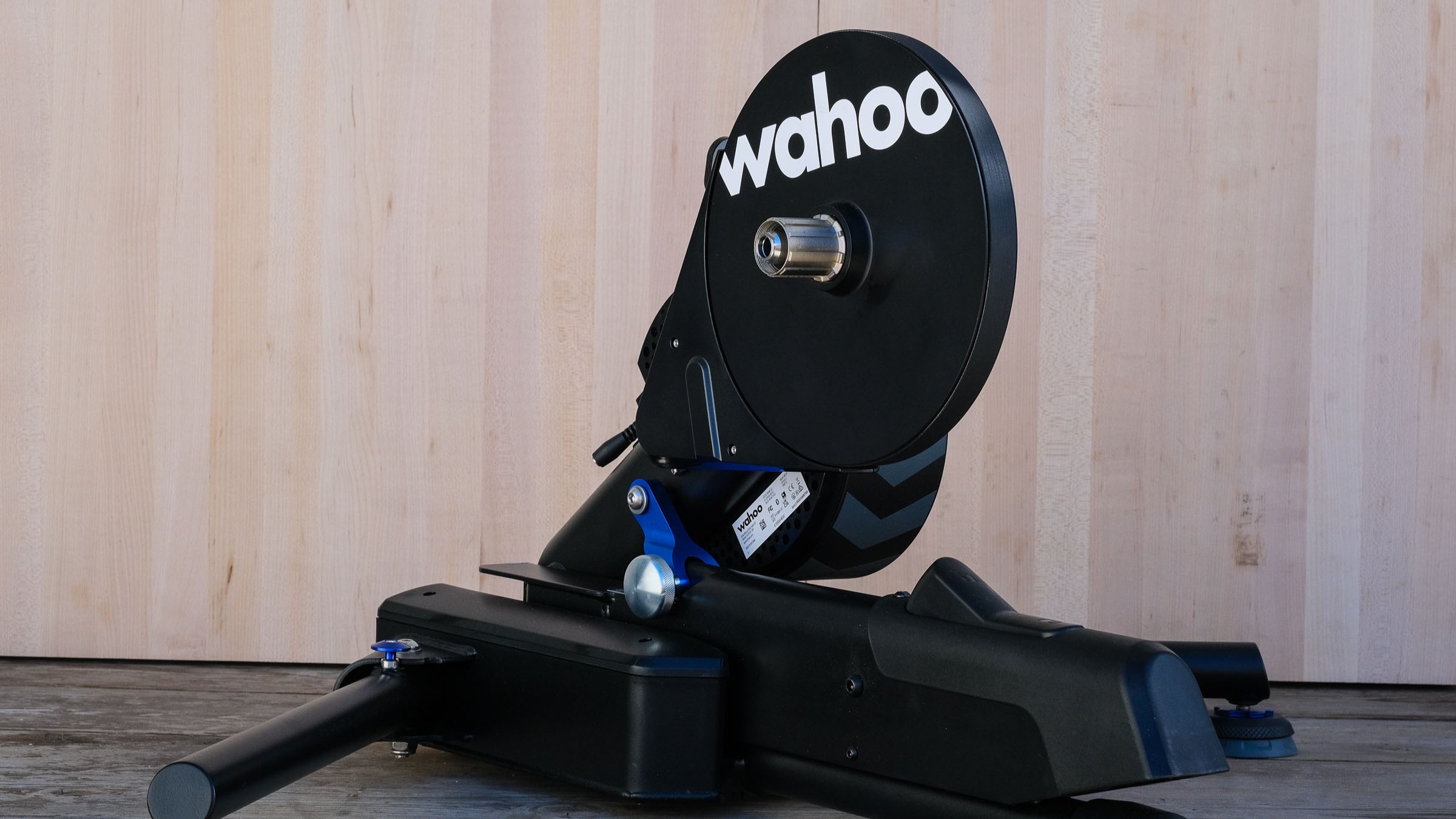
1. Wahoo Kickr Move
Our expert review:
Specifications
Reasons to buy
Reasons to avoid
Trainers that move fore and aft like the Kickr Move were polarizing in our testing. Yet it was undeniable that the Kickr Move was the best of the bunch for simulating outdoor rides. If you don’t like the fore-aft movement, the Kickr Move includes a lockout. The soft, padded Axis feet allow some side-to-side movement as well; you’ll need to adjust these carefully to hone in on the perfect position.
The resistance ramps up smoothly, set-up and pairing is a breeze, and the Kickr Move was one of the quieter trainers in our test (as measured with a decibel meter). Testers agreed that the Kickr Move is best if you’re looking for an immersive Zwift experience, racing in virtual environments, or sprinting out of the saddle during workouts frequently — particularly sprinting. If the movement isn’t your thing, save yourself $300 and opt for the Wahoo Kickr instead.
Best cycling indoor trainer overall
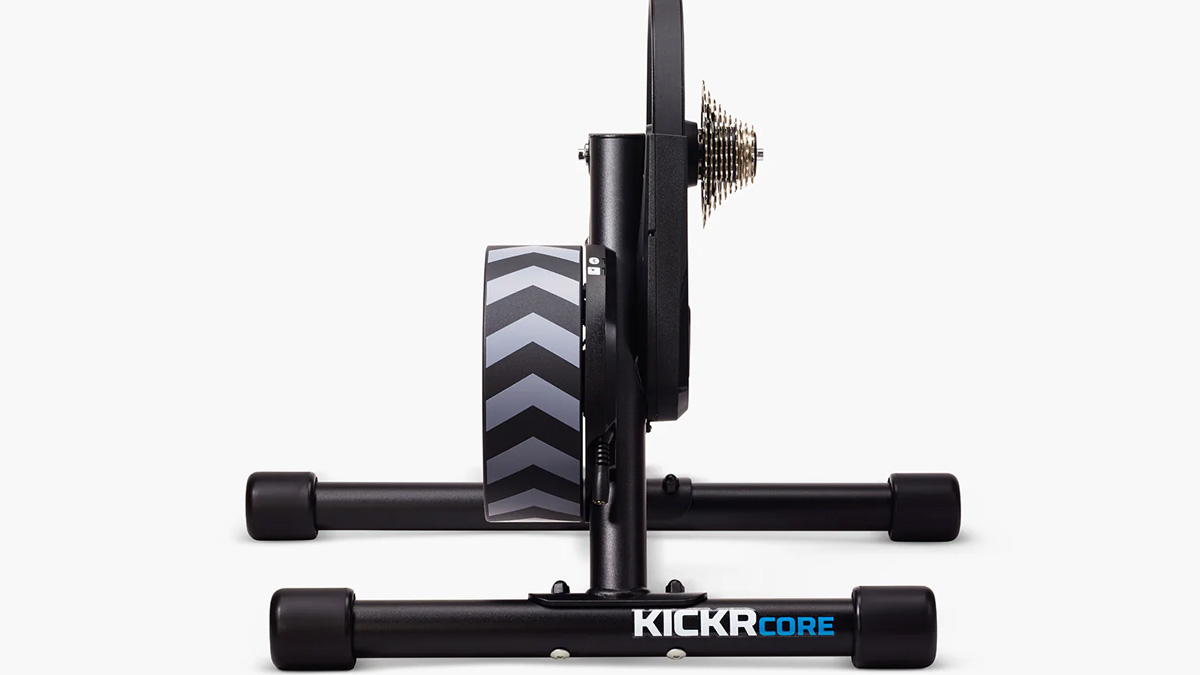
2. Wahoo Kickr Core Zwift One
Our expert review:
Specifications
Reasons to buy
Reasons to avoid
While the Wahoo Kickr Core Zwift One takes more assembly than every other trainer in our test, and it doesn’t fold up for storage, that’s about where its shortcomings end. At 40 pounds, it’s one of the lighter trainers in our test (Feedback’s Omnium weighs just 14 pounds), and it features a built-in cog rather than a freehub onto which you’d need to mount your own cassette.
That necessitates the use of the Zwift Click shifter, which mounts to your handlebars and requires a bit of a learning curve. Click setup and pairing are quick, and there’s a tutorial to get you going if you’re new to the game. But some of our testers complained about a lag between button push and resistance change.
Since there’s no cassette, the Zwift One is the best trainer for households with more than one rider using the unit. Swapping bikes is quick and easy because there are no cassette compatibility issues. The Zwift One is also excellent for users new to the smart trainer world, since the included instructions walk you through every step from unboxing to gameplay.
And all testers reported a smooth and consistent resistance ramp-up. As a final touch, the Zwift One comes with a 1-year Zwift membership. All that for a fair price makes Zwift Hub hard to beat.
While the Zwift One takes more assembly and doesn’t fold up, that’s where its shortcomings end. The Wahoo Kickr Core Zwift One is the best trainer for households with more than one rider using the unit.
Most compact cycling indoor trainer
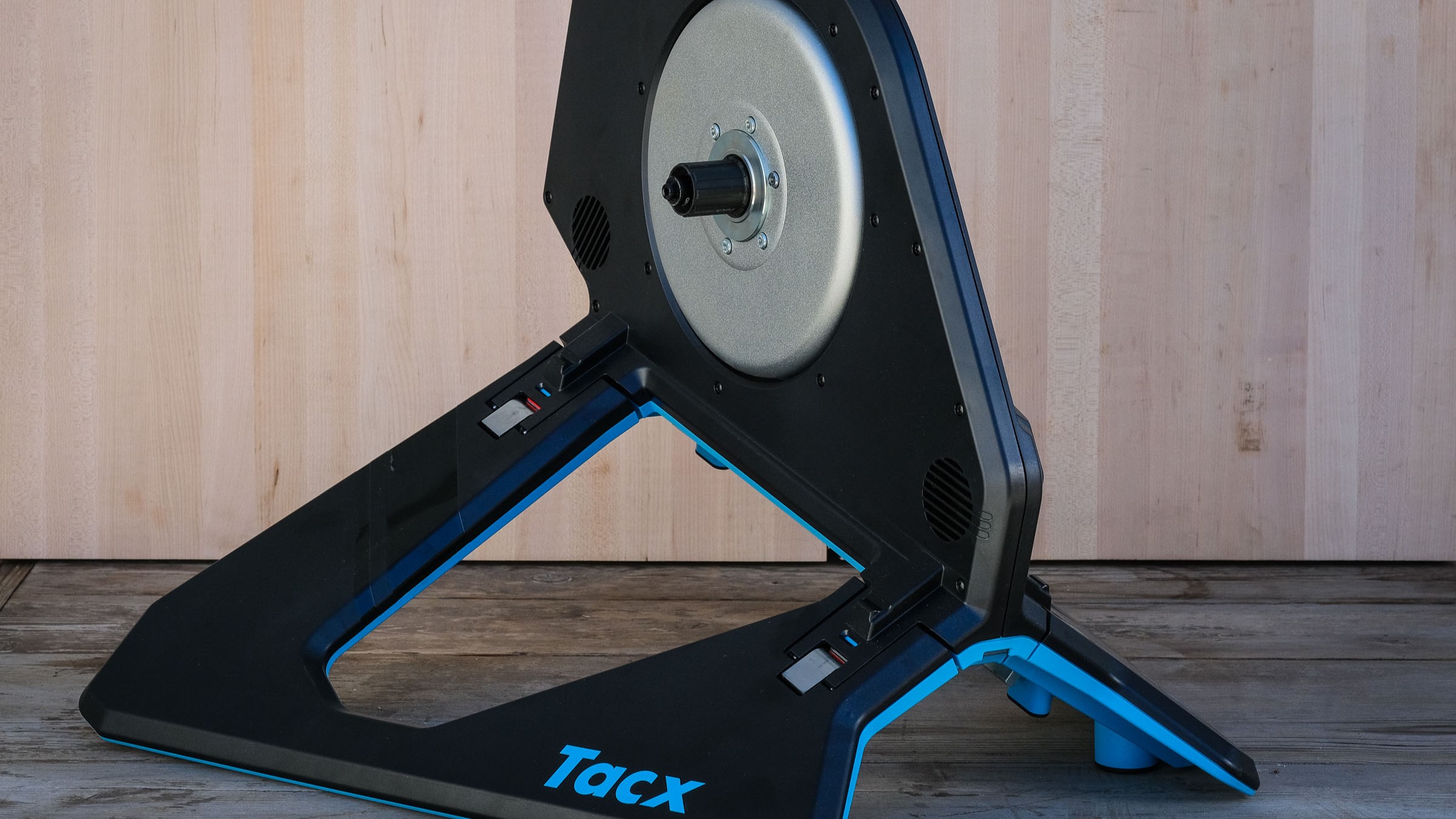
3. Tacx Neo 2T
Our expert review:
Specifications
Reasons to buy
Reasons to avoid
Despite its wide stance when set up for use, the Neo 2T folds up flat for easy storage. Its folded stature makes it easy to stow this in a closet or behind a couch. It weighs 47.4 pounds, but the legs provide an easy grasping point when folded, so it’s actually fairly easy to move around. When set up for use, the Neo 2T has a fairly tall stature, and the legs swing out wide; this is great for stability but it does take up quite a lot of space.
The trainer stared off very quiet — one of the quieter units in the test — but after 20 minutes of use, the Neo 2T started making a grinding noise that never went away. Testers also complained about lagging power data, and troubles with the accuracy and consistent connection of ERG mode.
Interestingly, you can use the Neo 2T without even plugging it in (though its functionality increases when plugged in). The metal flywheel and magnets interact with electrical coils, thereby regulating the resistance automatically.
You can add the Neo Motion Plates ($300) to get some fore-aft motion, though our testers found the motion mostly distracting and preferred the Neo 2T without them. They seemed most useful for lower cadence, higher power efforts for a more realistic ride feel. The Neo 2T will also simulate road surfaces and vibrate slightly to give you a real road feel.
Most stable cycling indoor trainer

4. Elite Direto XR-T
Our expert review:
Specifications
Reasons to buy
Reasons to avoid
The Direto XR-T is just a touch heavier than the Zwift Hub One, and it comes with the added benefit of folding legs. While it’s not exactly compact, the handle does make it easier to move when you’re not using it.
When set up for use, it’s super stable, and there’s almost no lateral movement. This is great if you’re after a stable pedaling platform, but it won’t give you that real-ride-feel that some lateral movement would give you. One of our three testers had some consistency issues with the ERG mode, but the other testers had no issues here.
Power data seemed very consistent and accurate, too. It also has a smooth resistance ramp-up and feels responsive to terrain changes in virtual riding environments. It is, however, among the loudest of the trainers we’ve tested, especially when sprinting. The XR-T does not include a cassette, but the Direto XR does. The two trainers are otherwise identical.
Most versatile cycling indoor trainer
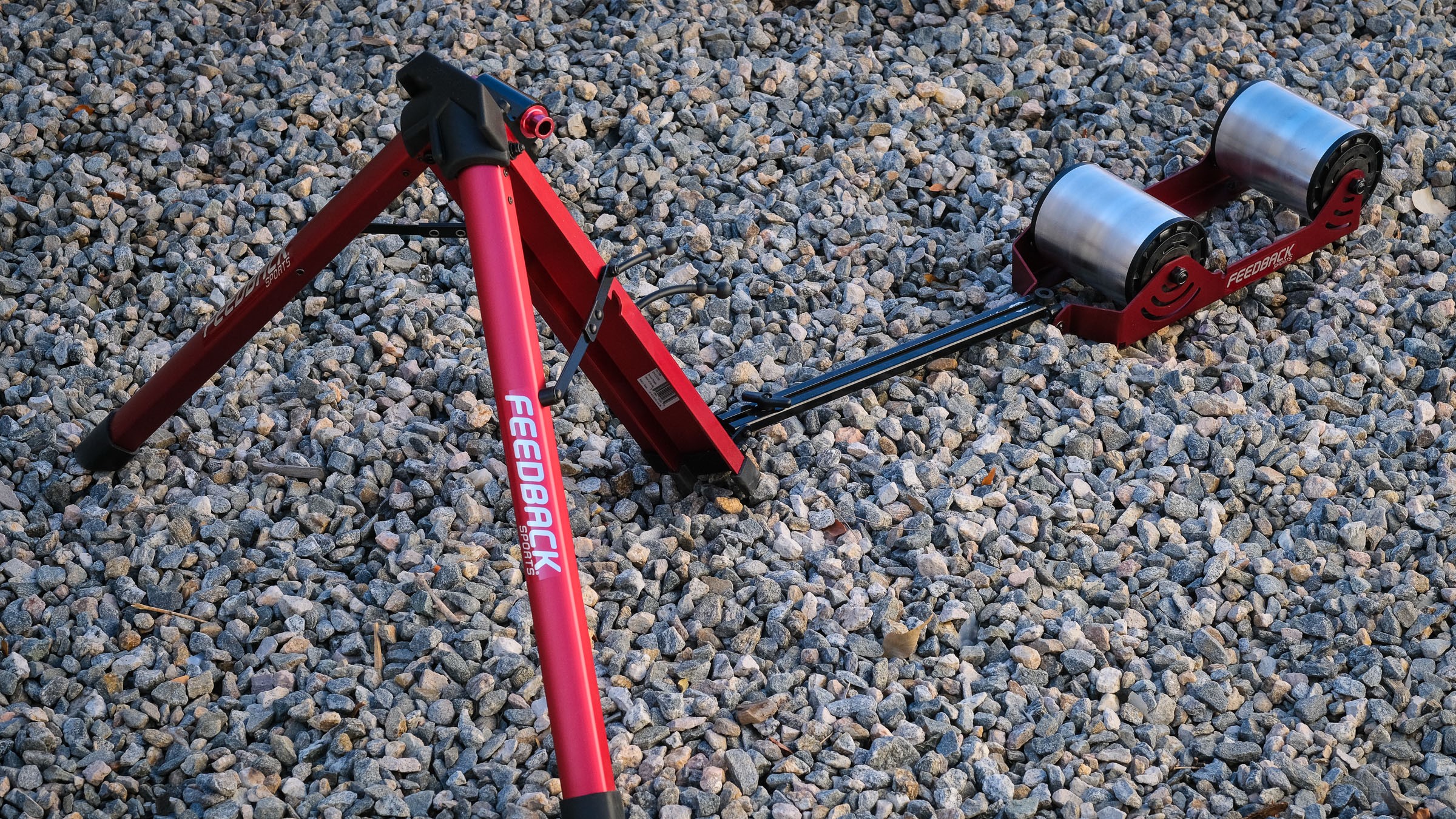
5. Feedback Omnium Over-Drive Bike Trainer
Our expert review:
Specifications
Reasons to buy
Reasons to avoid
The Omnium isn’t a smart trainer, yet it is surprisingly pretty darn smart. By using an ANT+ or Bluetooth rear wheel speed sensor, you can connect to Zwift and use your bicycle’s power meter to ride in a virtual environment.
It’s best if you’re short on space — the whole thing packs up super small, it’s light at 14 pounds, and it fits in the included carrying case. And the rollers feature magnets that provide progressive resistance automatically, which means you can get a real workout or warm-up without any connections, plugs, or virtual riding environments.
While it’s super light, it’s also super-stable. The front of the unit features a wide stance that keeps your bike planted, while the drums allow for some lateral movement for a comfortable ride feel.
While it may not be the right tool if you’re on a specific training program or want to get the most out of the virtual riding experience, it’s perhaps the best introduction to smart training out there and it’s more versatile than heavier, larger smart trainers. You’ll want to take it to races for your warm-up or on the road for that business trip.
Best indoor cycling trainer with natural resistance
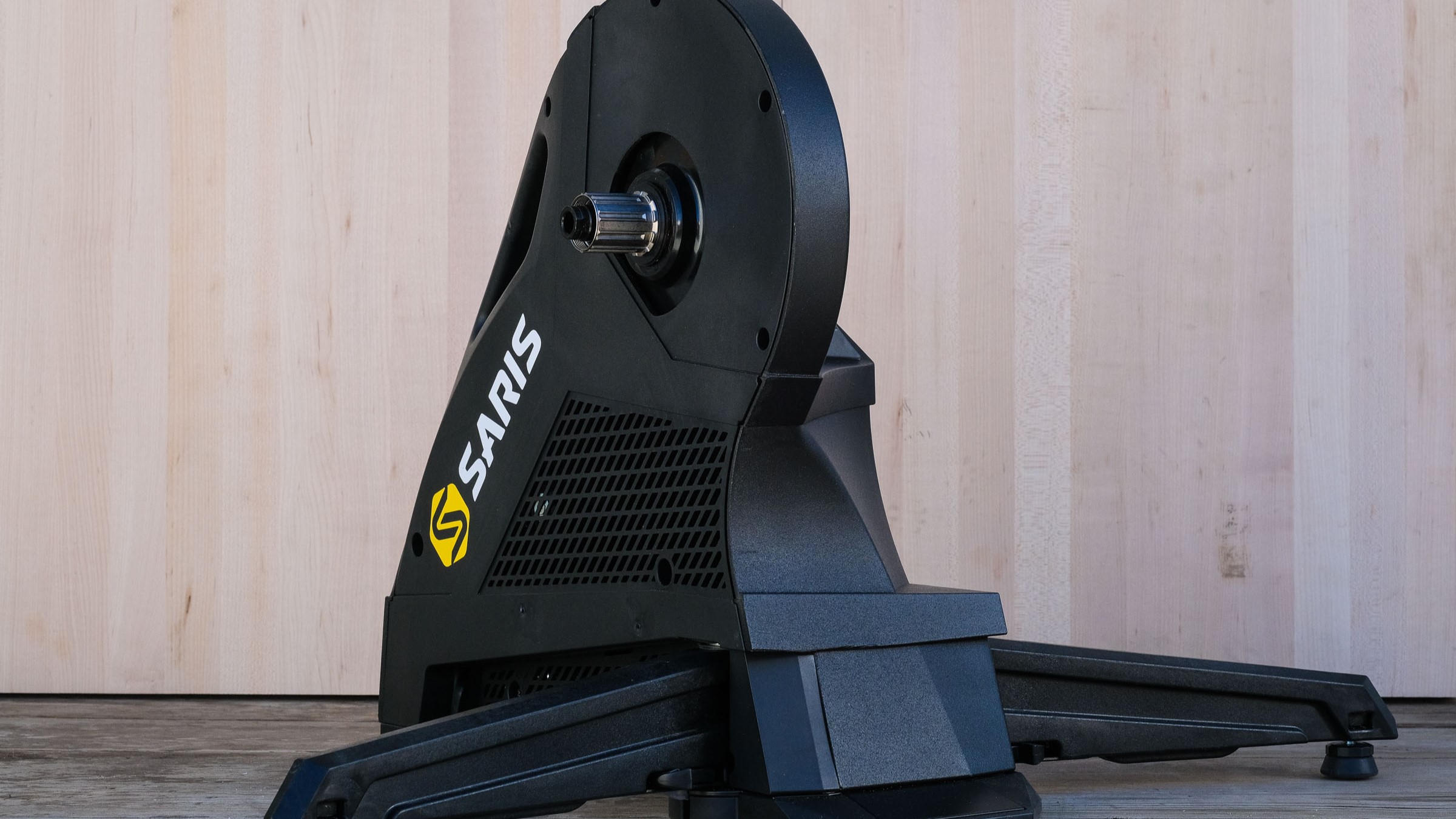
6. Saris H3 Plus Direct Drive Smart Trainer
Our expert review:
Specifications
Reasons to buy
Reasons to avoid
Our testers found that the Saris H3 Plus offered some of the smoothest and most natural resistance ramp-ups of any trainer in our test. The ERG mode felt reactive and accurate with less fuss than most other units. Adjusting the feet on the folding legs is easy, and it creates a stable unit that allows just enough side-to-side movement to feel natural. It folds up compact enough to store in a closet, though it’s pretty heavy at 52 pounds.
It's very quiet except when you’re really sprinting hard, and it looks and feels solid and well-built. It even comes with a front wheel block and a disc brake block, both of which store easily under the trainer when not in use.
The biggest complaint our testers had was the size and shape of the main body, which prevented some riders from being able to turn their quick-release thru-axles. The axle handles hit the trainer’s body, so it was necessary to swap out the axle with one that didn’t have a handle. In this case, you’ll need to use a long Allen Key to tighten the axle, which seems unnecessarily inconvenient.
How we test the best cycling indoor trainers
Each indoor cycling smart trainer in our test was ridden by at least three different testers, each with plenty of experience riding indoors and in virtual environments like Zwift. We tested each trainer straight out of the box, from set-up to riding.
Quick setup out of the box with minimal or no assembly steps is ideal, so we gauged each trainer on how easy it was to get pedaling.
Then, we tested how adjustable each smart trainer is. Are the legs quick and easy to unfold? Do the feet adjust to stabilize the unit? We asked these questions and more.
Once we had a bike attached to the trainer, we checked how quick and easy it was to pair the smart trainer to a computer or tablet loaded with Zwift. We took note of how well the trainer maintained a wireless connection throughout use.
While riding the trainer in virtual environments, testers paid close attention to each trainer’s stability and added features like fore-aft sliders. A natural ride feel is the best case scenario here. While you want your cycling smart trainer to be stable, a bit of side to side movement is sometimes preferable because it contributes to a better ride feel.
While each rider pushed the pedals, we checked the decibel levels of each trainer to find out which ones were quietest. Riders also paid attention to how smoothly resistance ramped up as efforts got harder.
The best indoor cycling smart trainers are easy to set up out of the box, quick to pair to external devices, easy to adjust for stability, and they offer smooth and natural resistance levels.
What are the different types of indoor cycling trainers?
While indoor cycling smart trainers come in all different configurations, the most common today are direct-drive trainers, wheel-on trainers, smart bikes, and rollers.
Direct Drive trainers require that you remove your rear wheel and attach the bike by its rear axle to the trainer itself. A cassette — the rear cluster of gears — is mounted to the trainer itself. This transfers your pedaling power straight to the smart trainer for better power accuracy and a more realistic ride feel.
Wheel-on trainers used to be quite common but are less so these days. The rear wheel remains on the bike, and the tire sits on one or more rollers, usually made out of metal. These rollers are attached to the trainer and provide resistance. Wheel-on units tend to be less expensive than direct-drive indoor cycling smart trainers, but they will wear out your bicycle’s tire. They are also not as accurate, and the tire can slip on the rollers, detracting from a real ride feel.
Rollers do not fix your bike in place at all. Instead, your rear tire makes contact with a pair of roller drums, and the front wheel rests on its own roller upfront. You then start pedaling and maintain balance yourself. Rollers can be very fun, but also very tricky, to ride. There’s a steep learning curve here.
Finally, smart bikes are the biggest and most expensive trainer option. These are akin to the best exercise bikes that you see in people's home gyms or at the gym. They tend to be very adjustable, and it’s possible to pack in a ton of added features that make the ride more fun and engaging. They are, however, rather expensive, they take up a lot of space, and they’re very heavy. These probably aren’t the best choice for consumers except for the most serious bicyclists.
What else do you need to get started?
It’s possible to get started indoor cycling with just an indoor cycling smart trainer and your computer, tablet, or phone. But to get the best experience out of your indoor cycling setup, you might consider a few key accessories.
For starters, riding an indoor cycling smart trainer is sweaty work. So you’ll want to get a fan to run while you’re riding indoors. A simple box fan is an inexpensive option, though there are fancier units too, like the Wahoo Headwind, which can adjust the strength of the breeze based on your heart rate, or even your current speed in the virtual cycling environment.
A small towel comes in handy not only to wipe your sweat away from your face but also to clean up your bike once you’re done with your ride. Sweat can eat away at your bicycle’s components, so be sure to clean up after every use.
Snacks and water are both musts, especially for longer trainer sessions. A small table to put them on helps out a lot; keep the table within easy reach so you can grab what you need while you’re still pedaling.
FAQs
Are indoor cycling smart trainers expensive?
Most indoor cycling smart trainers range in price from $400 to $1,600 or more. Some more elaborate indoor cycling units (usually smart bikes, which are much larger) can cost up to $4,000. These more expensive units usually offer additional features, or eliminate the need for you to use your own bicycle altogether. They’re more akin to a spin bike or one of the best exercise bikes for home workouts.
Do indoor cycling smart trainers require much maintenance?
Most indoor cycling smart trainers require little to no maintenance, but you’ll want to keep them clean, especially if your sweat drips on any of the trainer’s components. The salt in sweat can eat away at components, shortening the life of your trainer.
You may also need to change out your trainer’s cassette — or, the gear cluster on which the bicycle’s chain rides. This can wear out over time and cause shifting problems.
Are indoor cycling smart trainers heavy?
Most indoor cycling smart trainers weigh between 15 pounds for a stripped-down unit, to almost 70 pounds for larger units. Keep in mind that just because a trainer is heavier, it doesn’t mean that trainer is more stable.
What makes a smart trainer smart?
In short, wireless connectivity to external devices is the key factor that makes a smart trainer “smart.”
Beyond that, the trainer’s ability to automatically adjust resistance levels, as well as other features that can augment the rider’s experience while riding, all contribute to the ‘smart’ label.
Can I still ride indoors without a smart trainer?
Of course! An indoor cycling smart trainer certainly makes indoor riding more interesting and effective for workouts, but it is definitely possible to get a good workout on a non-smart trainer, too. Smart trainers simply automate more of the workout for you, so you can concentrate on the ride.
Can I still use Zwift without a smart trainer?
Yes, you can use Zwift without a smart trainer, though you’ll be significantly limited in what features you can use. Feedback Sports’s Omnium Trainer, for example, is not strictly a smart trainer at all, but by using a bicycle’s power meter (if it’s equipped with one) and a rear wheel sensor, you can still use this trainer to enjoy Zwift and even some other web-based virtual environments.
Features compared
| Row 0 - Cell 0 | Wahoo Kickr Move | Wahoo Kickr Core Zwift One | Tacx Neo 2T | Elite Direto XR-T | Feedback Omnium Over-Drive Bike Trainer | Saris H3 Plus Direct Drive Smart Trainer |
Flywheel weight | 16 pounds | 12 pounds | 275.5 pounds | 35 pounds | 14 pounds | 20 pounds |
Connectivity | Wi-Fi, Ethernet, ANT+ FE-C, and up to 3 Bluetooth connections | ANT+, Bluetooth | ANT+ FE-C, Bluetooth | ANT+, Bluetooth | n/a | ANT+ FE-C, Bluetooth |
Max power | 2,200 watts | 1,800 watts | 2,200 watts | 2,300 watts | n/a | 2,000 watts |
Cassette included | Sunrace 11-speed (11-28) | Virtual cassette | No | 11-speed Shimano 11-28 | n/a | No |
Axle compatibility | QR, 12x142, 12x148 | QR, 12x142, 12x148 | QR, 12x142, 12x148 | QR 130-135x5, 142x12mm thru-axle | 9mm Quick-Release, Thru Axle: 12×100mm, 15×100mm & 15×110mm | QR, 12x142, 12x148 |
Average price | $1,600 | $599 | $1,400 | $699 | $400 | $649 |
Get instant access to breaking news, the hottest reviews, great deals and helpful tips.

Dan Cavallari is the former technical editor for VeloNews Magazine, who currently reviews electric bikes, bike lights, and other bike accessories for Tom's Guide. In addition to VeloNews, his work has appeared in Triathlete Magazine, Rouleur Magazine, CyclingTips.com, Road Bike Action, Mountain Bike Action, CycleVolta.com, Tomsguide.com, and much more. Dan also hosts two podcasts on his site, Slow Guy on the Fast Ride: One is about cycling and other outdoor activities, while the other looks at mental health issues. Most recently, Dan also covered the 2022 Tour de France. Dan lives outside of Denver, Colorado with his family.
- Jessica DowneySenior Fitness Writer
